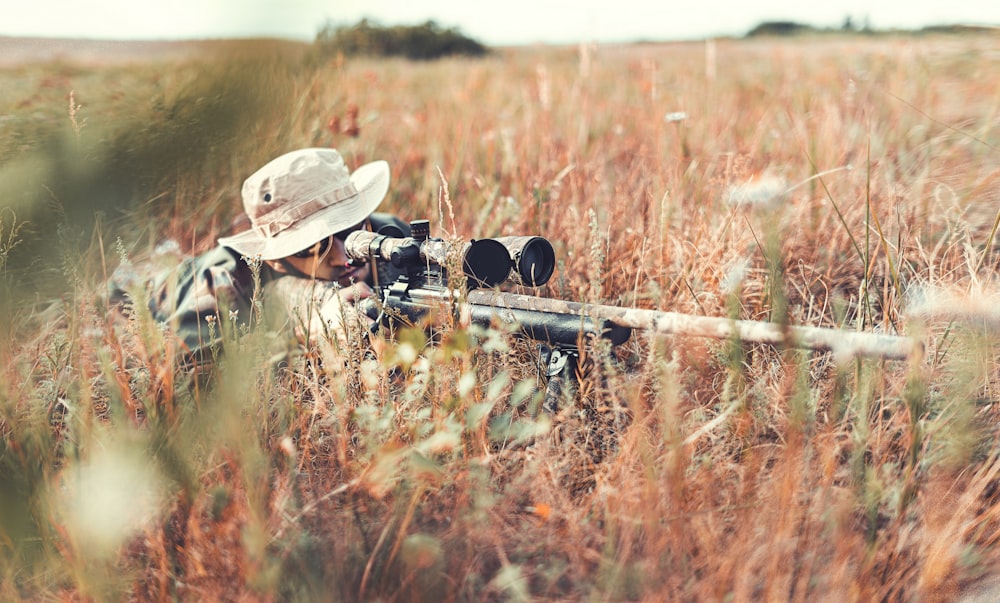From the first sharpened stick hurled at prey to the sleek and sophisticated hunting equipment of the modern era, the evolution of hunting technology has been a remarkable journey.
Throughout history, hunting has been an essential activity for human survival and sustenance. Over time, advancements in hunting technology have revolutionized the way we pursue and capture game, enhancing our efficiency and success.
This article will delve into the fascinating progression of hunting technology, exploring how advancements in equipment and tools have shaped, and continue to shape hunting experiences.
So, let’s get right into it!
The Evolution of Hunting Gear
Our earliest ancestors relied on sharp stones and bones to hunt for survival. These rudimentary tools gave way to the development of spears and arrows, providing early hunters with the ability to attack from a distance.
The invention of the bow around 10,000 BC marked a significant leap, allowing for greater precision and power.
As we moved into the Iron Age, metal became the material of choice for hunting tools. Metalworking techniques led to the creation of more durable and effective hunting gear. Iron-tipped arrows, spearheads, and blades became popular, providing hunters with improved penetration and cutting capabilities.
Over time, advancements in craftsmanship and the emergence of specialized artisans led to the creation of finely crafted hunting gear.
The advent of firearms in the 14th century brought about a revolution in hunting. Firearms drastically transformed the hunting landscape, offering hunters a level of power and range never before seen. Still, early firearms, such as muskets and flintlock rifles, were cumbersome and required considerable skill and time to reload.
The 19th and 20th centuries saw further improvements in firearms, with the development of repeating rifles, shotguns, and handguns like the reliable Glock 17. One notable feature of the Glock 17 is its high-capacity magazine, typically holding 17 rounds of ammunition. The Glock 17 magazine still remains a popular choice among hunters and shooting enthusiasts due to its reliability and versatility.
In the 21st century, we’re witnessing a fusion of traditional hunting tools with cutting-edge technology. This fusion has resulted in the development of hunting gear that offers enhanced efficiency and accuracy.

Modern Hunting Gear and Equipment
Today’s hunting gear is a blend of traditional tools and modern technology. Here are some of the most commonly used tools in the hunting field today.
Firearms
Rifles and shotguns remain the most popular hunting tools. They have evolved to become more accurate, lightweight, and easy to use. Modern firearms offer a range of calibers to suit different hunting needs, from small-game to big-game hunting.
Hunting Bows
Modern hunting bows are a silent yet effective tool, perfect for those who prefer a more challenging and primal hunting experience. One of the key features that sets modern hunting bows apart is their construction. Made from lightweight yet durable materials such as carbon fiber and aluminum alloys, these bows offer a perfect balance between strength, maneuverability, and silence.
Hunting Knives
Hunting knives are essential for field dressing game. Today’s hunting knives are sharper, more durable, and designed with advanced materials. From skinning knives to gut hooks, a modern hunter has a variety of specialized knives at their disposal.
Camouflage Clothing
Modern hunting clothing is not only designed to blend in with the environment but also to protect the hunter from the elements. Advanced materials provide insulation, waterproofing, and breathability, ensuring comfort during long hunts.
Moreover, modern hunting boots offer superior traction, ankle support, and insulation, making them indispensable for any hunting expedition.
Optics
Binoculars and scopes have become more compact and offer clearer images, even in low-light conditions. High-quality optics can significantly improve a hunter’s ability to spot and accurately target a game from a distance.
Night Vision Equipment
Night vision scopes and binoculars have opened up the possibility of night hunting. These devices amplify available light, allowing hunters to see clearly in near-dark conditions.
Trail Cameras
Trail cameras allow hunters to monitor game activity in a particular area over time. They provide valuable information about animal habits and movement patterns, helping hunters plan their hunts more effectively.
Latest Technological Advancements in Hunting Gear
The latest technological advancements are pushing the boundaries of what’s possible in hunting. Here are ten of the most notable ones:
1. GPS Devices
GPS devices have revolutionized the way hunters navigate unfamiliar terrains. They allow hunters to mark hunting spots, track their paths, and even share locations with others.
With real-time weather updates and topographic map features, these devices are indispensable for the modern hunter.
2. Drones
Drones are definitely a big hit in our present world, entering even the field of hunting. They can be used for scouting areas without disturbing wildlife, providing a bird’s eye view of the terrain. They have the ability to cover large areas quickly, identify game, and even assess the health of the herd.
Paired with the advancements of high-resolution cameras and thermal imaging capabilities, drones are becoming a game-changer in hunting.
3. Advanced Camouflage
Despite being waterproof and lightweight, new materials and patterns can mimic the environment more accurately, making the hunter virtually invisible. Some advanced camouflage even adapts to the changing environment, altering its color based on the surroundings.
4. Smart Weapons
The integration of AI technology into weapons is another significant advancement.
Smart rifles, for instance, come with computerized scopes that can calculate the perfect shot considering factors like distance, wind speed, and bullet type. Some even have a “tracking” feature that locks onto the target, ensuring a precise and ethical kill.
This technology not only increases accuracy but also promotes responsible hunting by reducing the chances of wounding an animal.
5. Thermal Imaging
Thermal imaging devices can detect heat signatures, making it easier to spot game in low light conditions or dense foliage. They can reveal hidden or camouflaged game, giving hunters a significant advantage. Some scopes even combine thermal imaging with night vision, offering unparalleled visibility.
6. Smartphone Apps
There are numerous apps available that can help with everything—from tracking the game to identifying plants and navigating. Some apps provide real-time weather updates, hunting regulations, and even connect you with other hunters, slowly replacing all other communication devices.
7. Sound Amplification Devices
These devices help hunters hear distant sounds more clearly, potentially alerting them to the presence of game. They can amplify faint sounds while suppressing loud noises, like gunshots, protecting the hunter’s hearing. Some models even offer directional hearing, helping identify the source of the sound.
8. Odor Eliminators
Advanced sprays and clothing treatments can eliminate human scent, making it harder for animals to detect the hunter. Some products even mimic the scents of the environment, further camouflaging the hunter. This technology can significantly increase the chances of getting close to game.
9. Ballistic Calculators
Ballistic calculators, often available in the form of smartphone apps, allow hunters to input data such as wind speed, distance, and firearm type to calculate the perfect shot.
10. Portable Hunting Blinds
Modern hunting blinds are lightweight, easy to set up, and offer advanced camouflage. Some even come with scent-blocking technology and noise-reducing materials, providing the hunter with a stealthy and comfortable hunting spot.
What Does the Future of Hunting Gear Hold?
The future of hunting gear is poised on the brink of a technological revolution. As we move forward, we can expect to see even more integration of technology into hunting practices.
Artificial Intelligence (AI) is set to play a significant role in analyzing animal patterns, predicting their movements, and even automating some aspects of hunting. It could also help manage hunting quotas based on real-time animal population data, ensuring that hunting doesn’t negatively impact biodiversity.
In essence, The future of hunting gear, driven by AI technology, holds the promise of a more precise, efficient, and environmentally conscious approach to hunting.





































